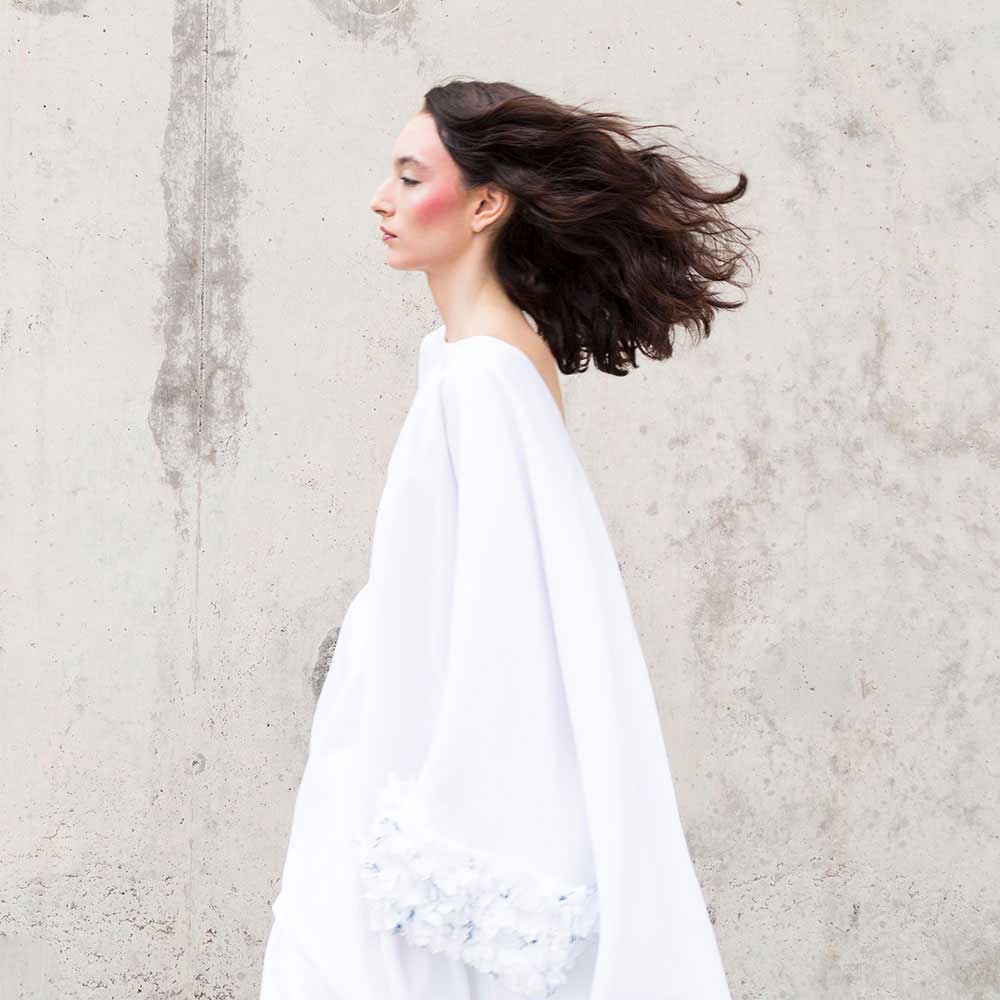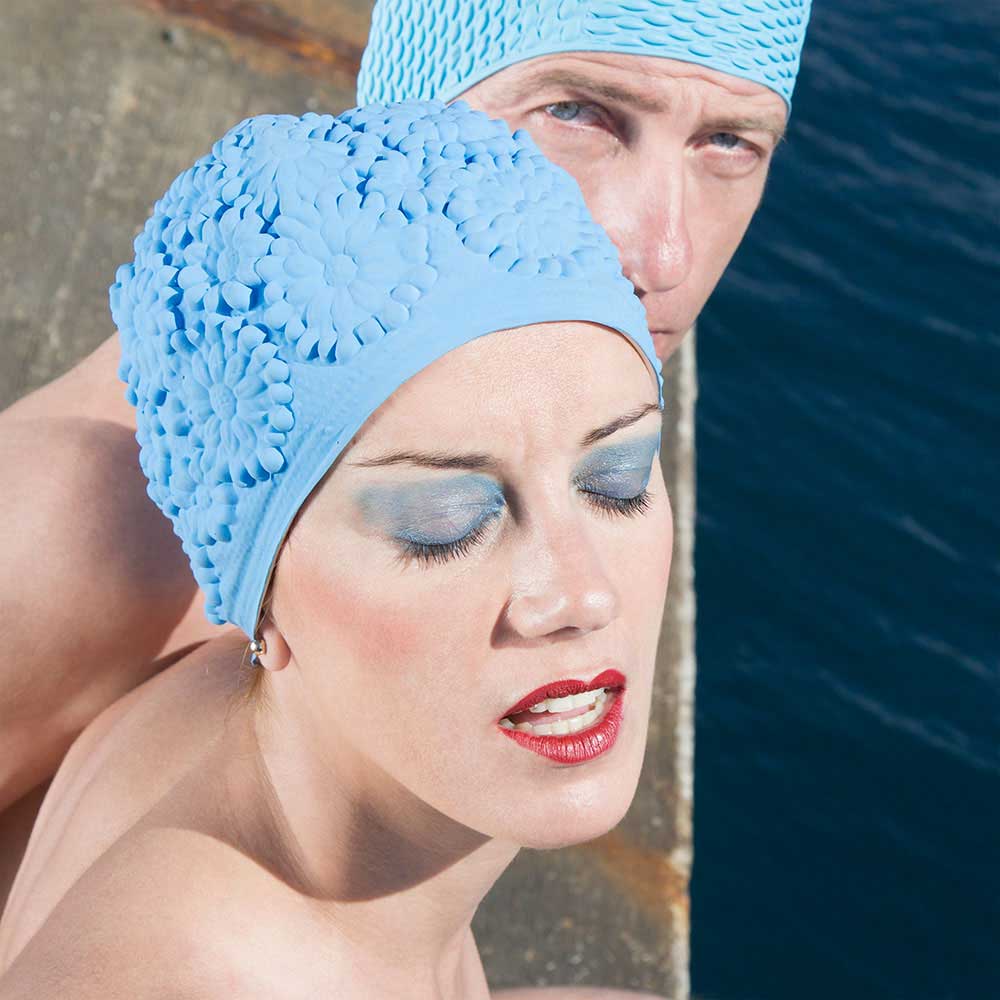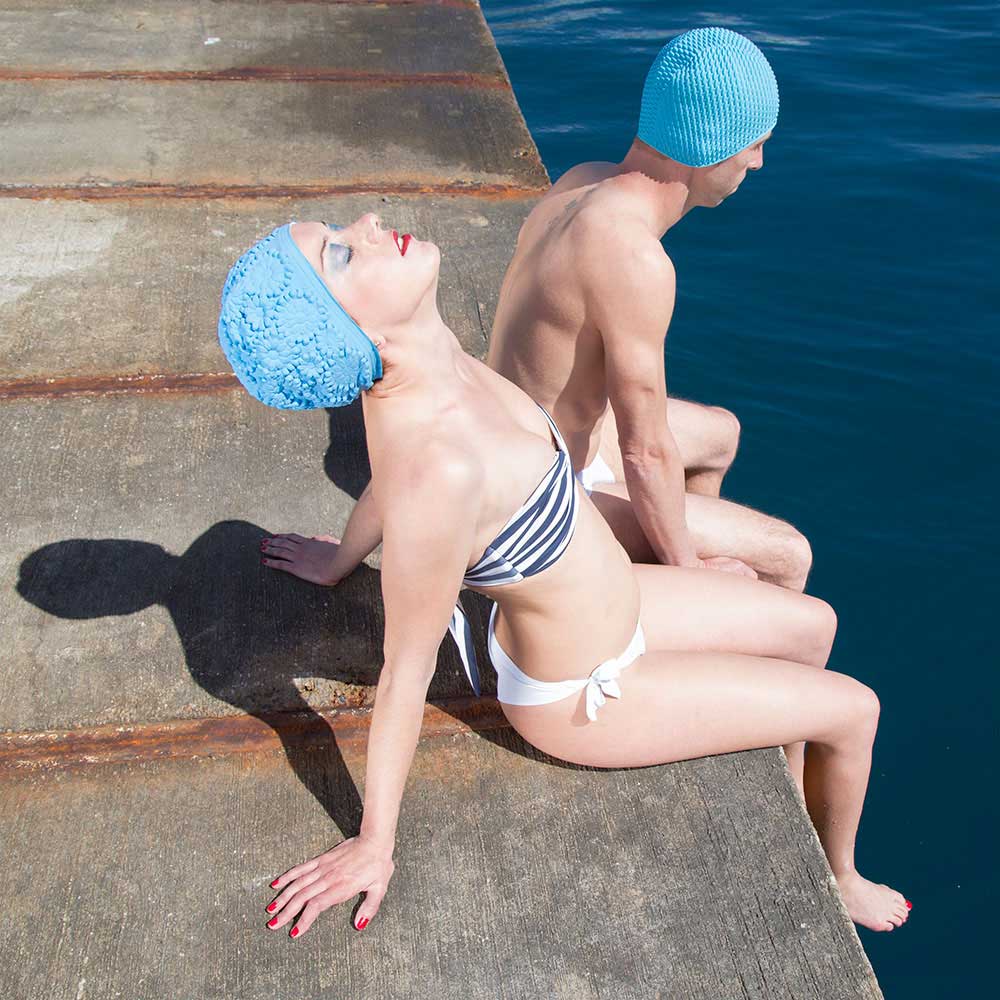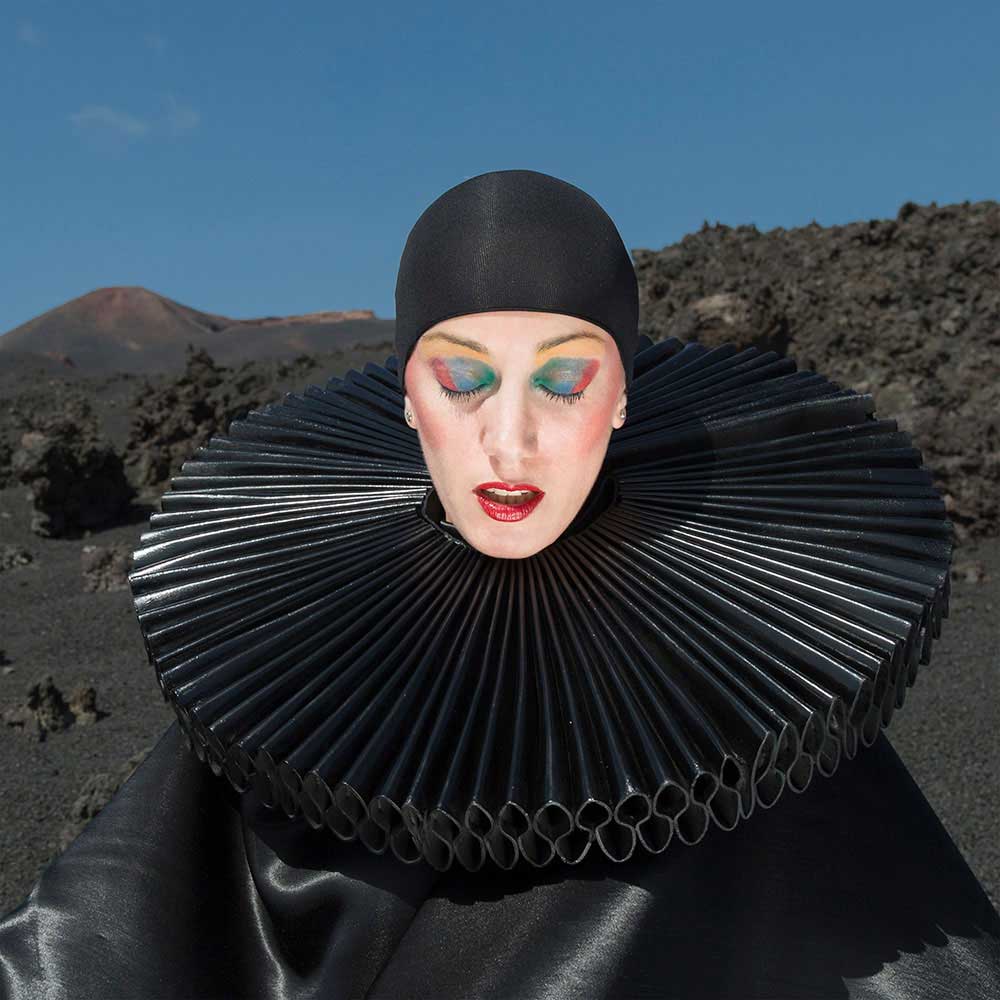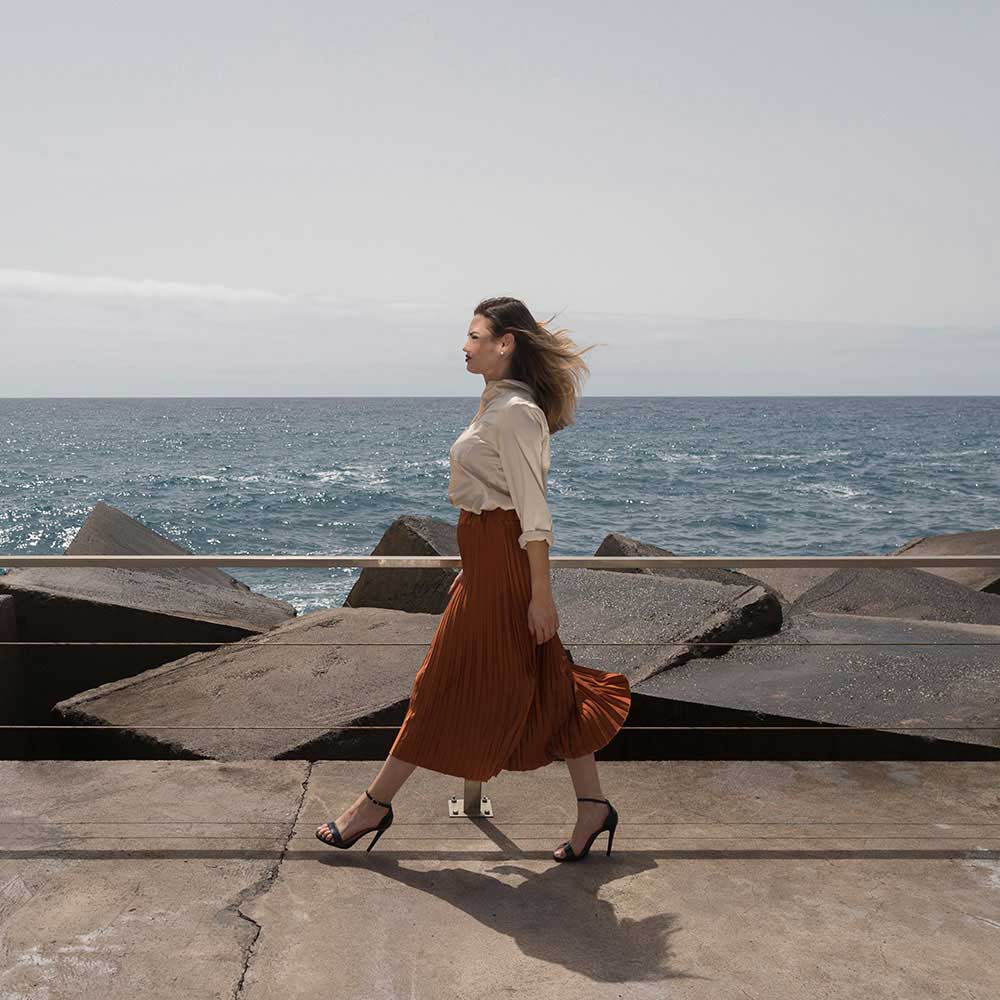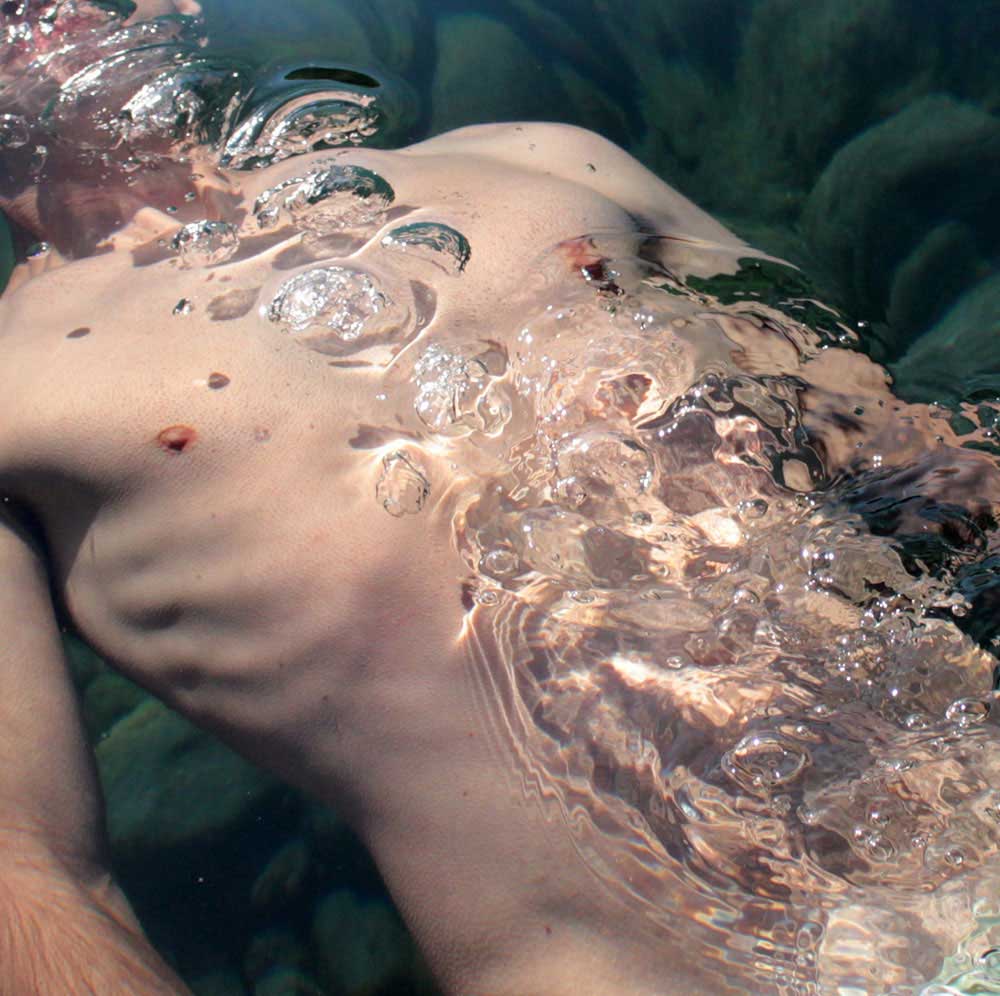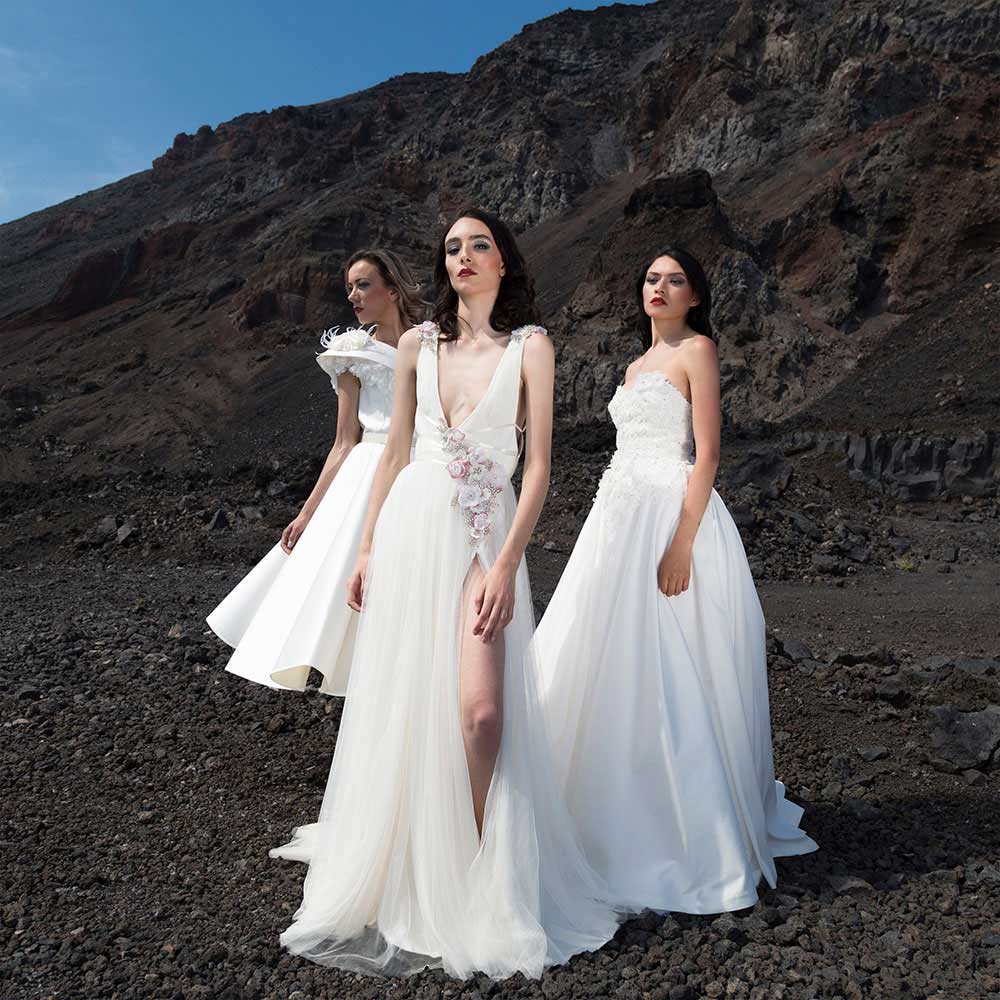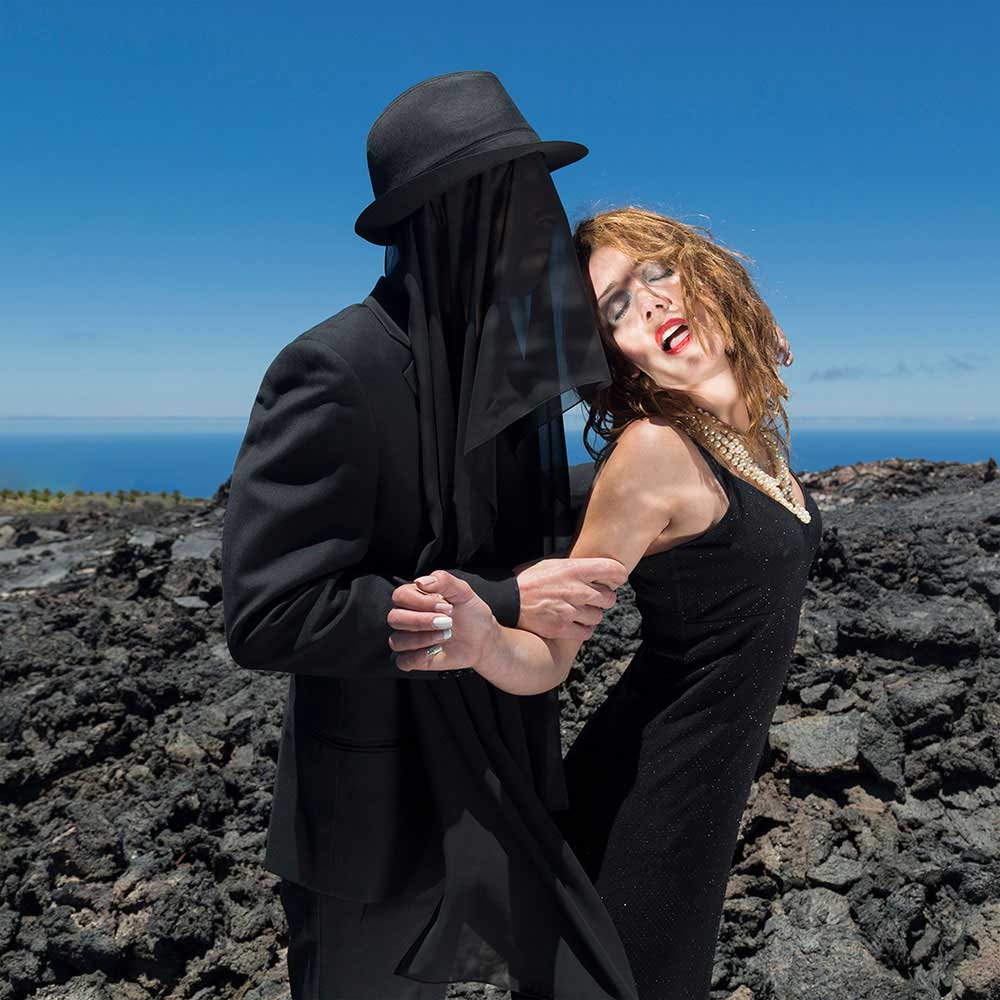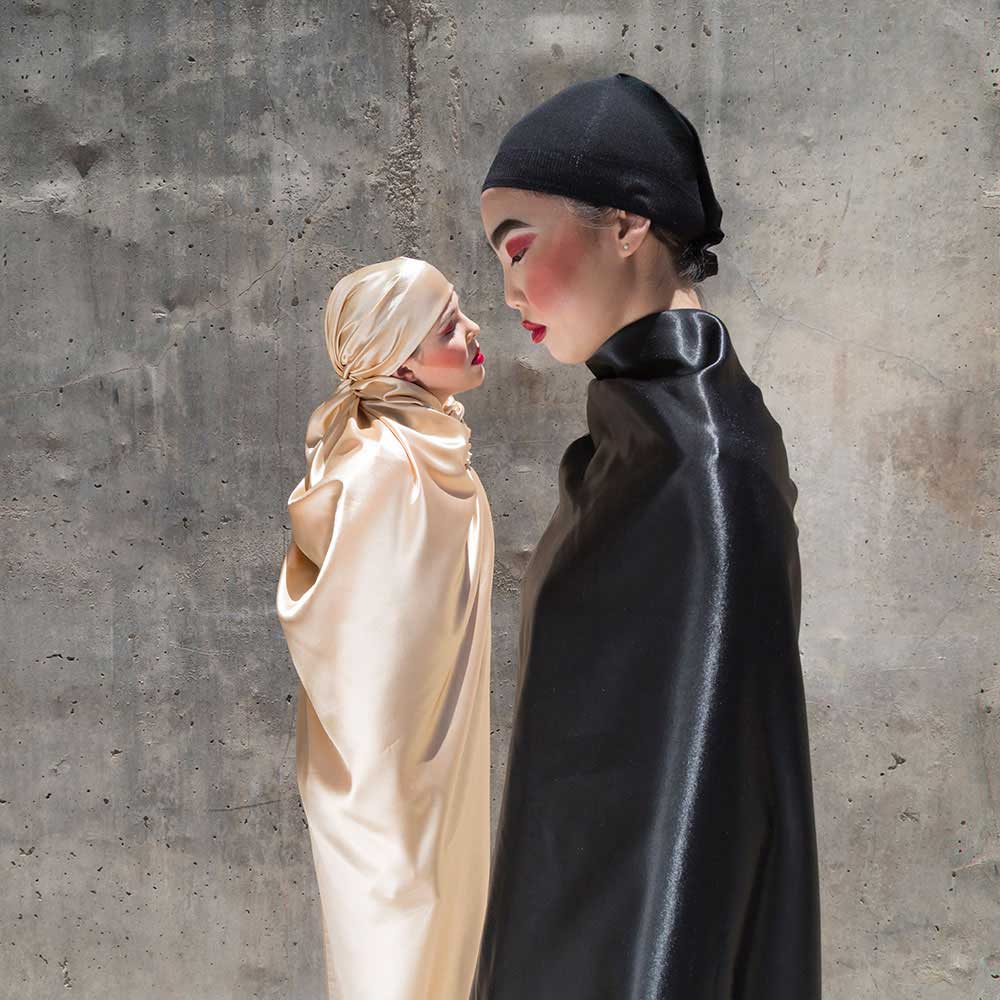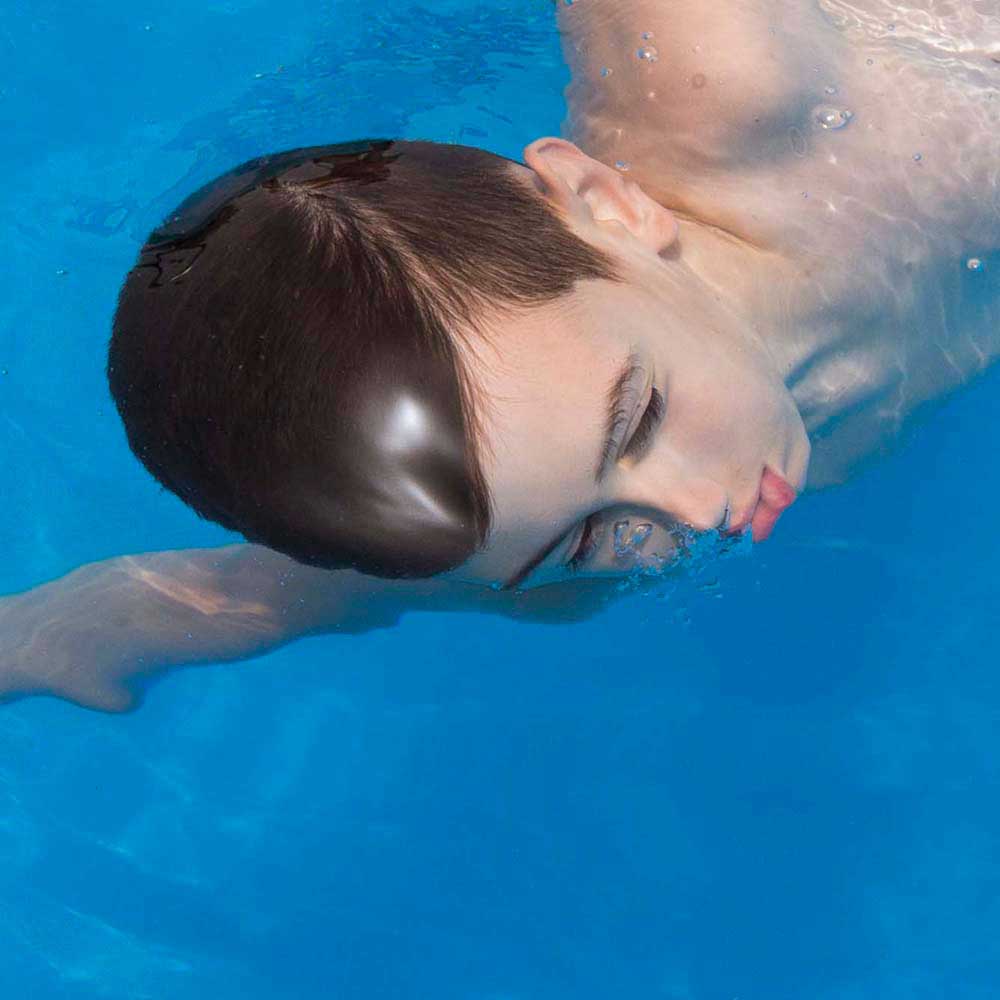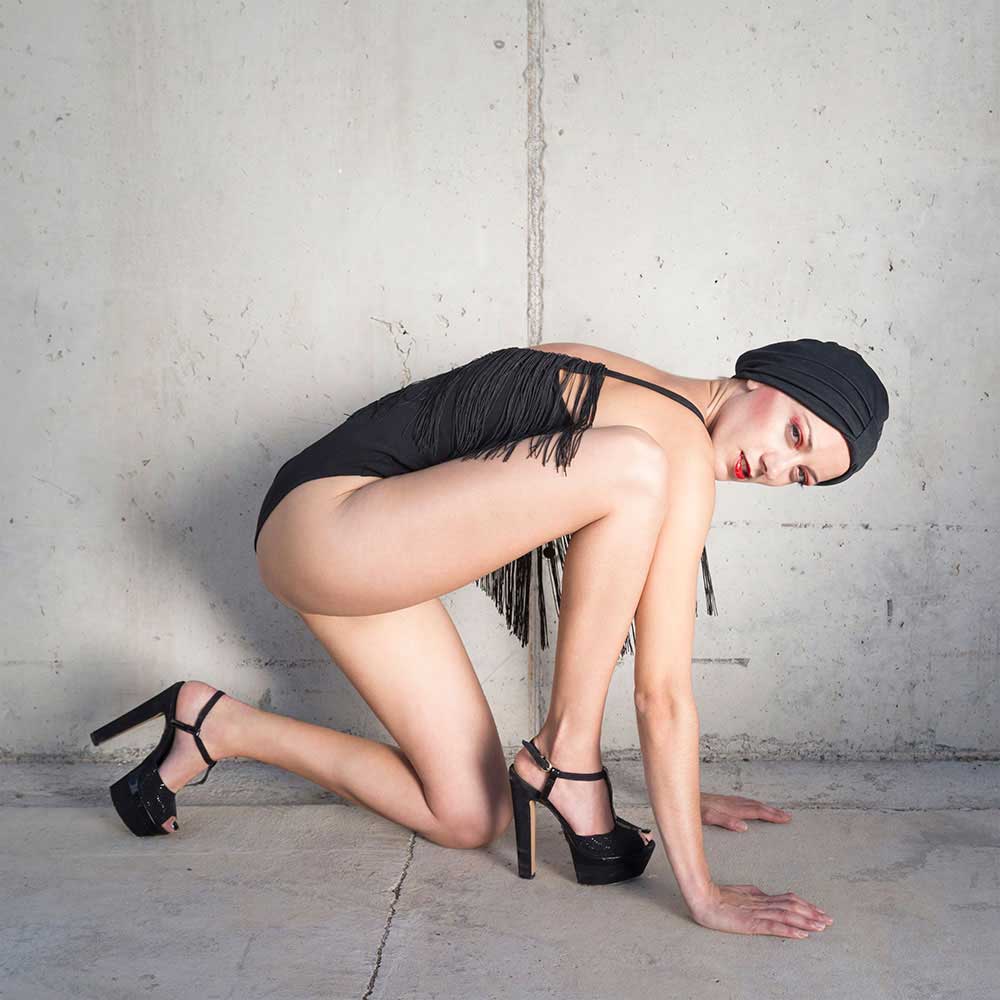What if Helmut Newton or Guy Bourdin had been born in The Canary Islands? Well, probably their works would have been kind of similar to what David Rodríguez does. Moving from the surrealist movement to fashion photography, this Canarian artist has created a stylish and chic body of work with soul.
Being an islander is a fact that has determined his production, his subjects appear mysteriously surrounded by water, volcanic rocks and always under the sun. He seems to play mind games of domination and desire with his models, maybe influenced by his studies background. Welcome to his warm universe of beauty.
David graduated as a Psychologist in 2003 at the University of La Laguna, in Tenerife, and ten years later when he was already settled in his profession he studied Photography in Valencia. Although he was always attracted to art, it was then when he started his journey as a photographer, becoming also a self-taught artist throughout those past years. He has received great recognition for his works. He has participated in several exhibitions such as The Rafael Ramos García International Photography Awards (twice),The Summer Exhibition (also twice) and he has also exhibited with The C Project collective. Everybody wants a piece of cake, his images have graced the pages of publications like PhotoVogue, Pap Magazine and Kaltblut Magazine. He has also been on the cover of different magazines: Malvie, Picton, Gmaro and Shuba to name some. Today he combines his two professions, and when I say combine I mean it. His images are full of emotional and psychical states. He has a proven skill to submerge his people into their inner worlds. He also backs them up with a conceptual and theoretical setting to strengthen the synergy within the photo-narrative.
In the beginning, he, like many other photographers, started experimenting with different techniques and letting the iconic artists that he adored to influence his pieces. Series like Venus, Faded, Antique and Memories were rich in poetry and were shot using long exposure, both were quite popular in literary and art journals. While Hide and Cover were a clear tribute to René Magritte. Besides, Girl, Pop Girl, Drops and the fantastic Pool were his pop art statements. And then, Fresh became his first big series, showing one of the models he has a fetish for: Miguel García. In this series, we could taste his sense of masculinity with a certain homo eroticism. The sun and the water were already there, both typical elements in his work. And it will also mark his naturally balanced square format making us viewers go around the image as he wished. Fresh was so important for him that he created a second part with more participants, a clearer intention and higher level results.
In 2018, he moved one step closer to his masterpiece with his series Bathers, getting attention from art and especially fashion magazines. In his own words: «Bathers is inspired by a photograph of Horst P. Horst of the same name and it represents a summer day in which we can see two bathers enjoying the sun and the sea. The bathers show sensual and elegant poses under a backdrop of surrealist air. The backgrounds are simple to give greater prominence to the subjects that appear in the photographs». The models Virginia Díaz and again Miguel García stated in this series some iconic and Freudian poses and became the hallmark of David’s creations for his future archetypals. Bathers also set a mood for his suceeding sequences, his style was born. The same year, David produced some other high quality series. In Hurts, for instance, he finds inspiration again in psychological issues: «Although it may seem paradoxical, we are attracted to what is difficult or even to what is illicit, even when we are conscious that it may be harmful and that it will make us suffer. There seems to be a certain charm about the forbidden that makes it indescribably desirable». There is a sexual tension in this series conveyed through reflections, the dark clothes of the male protagonist and even the volcanic setting. It almost becomes a role play of a sadomasochistic game. They both surrender to desire. There is a common disturbing element in some of David’s works, it seems he wants to explore the appeal of the forbidden within the human conditions and relations. All these poses we find in his works are studied previously by the photographer, he just hates improvisation. About his creative process, he confesses: «I plan each of my sessions thoroughly, down to the last detail. I start my creative process from an idea, which can be a concept, the stanza of a song, the sequence of a movie or a photograph that I have seen. This initial idea matures until it takes shape ”
His series Femininity (2018) moves towards fashion. Makeup and clothes became an important part of the images. There is a clear-eyed quality that persists throughout his imagery, no matter who or what he presents. The presence of light, the windy and sunny day and the repetition of postures of the two female models made this series an interesting twist in his work. David stated: «this series was meant to encourage us to question our preconceptions». The poses in his series are so unusual, unique, uncanny and unconventional as in the excellent works of photographers such as Eiichiro Sakata or Sachiko Kuru. David has recognised his admiration towards: «Erwin Blumenfield, Willie Christie and especially Guy Bourdin». His series Swimmer meant a new direction towards minimalism and also a playful game with dimensions. The beauty he now shows is more refined, delicate, femenine and graceful. In this series, he risked himself combining black and white and colour photographs successfully.
The sun is a common feature in his works. Looking at his photographs, we may think that there are no rainy days in the Canary Islands, what is more, we may believe it’s an eternal hot summer. His subjects become sun worshippers with their mouth open or their eyes closed enjoying the sun rays. It seems David is always looking for the sun, he finds the inspiration in the summer fantasies. We can almost hear him directing the models in the shootings to the sun to get the light he wants to. In a shocking development, David’s interest in the sun is so evident that we rarely find a direct look at his camera, because his models are just looking for the blue sky, making this another uncommon characteristic of his portraits. It’s like he would let the models just play in space and find their inner selves in his photographs rather than trying to show them with conventional portraits.
In Altra, he showed again another way of shooting fashion photography. He presented two models almost as beautiful presences or ghosts. The compositions are stronger but at the same time still subtle and soft. In Rococo he played with irony and sexuality using traditional costumes in a green context. In Dive, Love and Coast his adored models Virginia and Miguel made the magic, they became two stylish Olympic champions or heroes in these series because David understands fashion as something bigger. In Namibia, he showed his exotic African vision, in this series the model Daniel Eleazar did a brilliant work for the camera. And it would be with his series Hollywood (2019) when he would emerge again as an incredible creator. His representation of the motion picture industry was set inside a volcanic crater, taking advantage of his island geography. This is how you present wedding gowns for an editorial! It’s just so beautiful! This photographer is an antidote to soulless over-produced fashion photography. His philosophy is steeped in deconstructing the models’ routines, their clothes and their makeup. His idea of fashion is a thoughtfully assembled outdoor stage in a perpetual summer. Bathers set the tone beautifully, and the continuation exploded in elegant, chic and brand new iconic images. His last moves: Circus and Performance (both 2020) point in another direction, towards a more theatrical representation of fashion, full of drama with extreme performative roles, almost like a drag scene in the aesthetic expression. Can’t wait to see David Rodríguez’s next play! [Instagram]
Seigar
Seigar is a passionate travel, street, social-documentary, conceptual, and pop visual artist based in Tenerife, Spain. He feels obsessed with the pop culture that he shows in his works. He has explored photography, video art, writing, and collage. He writes for some media. His main inspirations are traveling and people. His aim as an artist is to tell tales with his camera, creating a continuous storyline from his trips and encounters. He is a philologist and works as a secondary school teacher. He is a self-taught visual artist, though he has done a two years course in advanced photography and one in cinema and television. His most ambitious projects so far are his Plastic People and Tales of a City. He has participated in several international exhibitions, festivals, and cultural events. His works have been featured in numerous publications worldwide. His last interests are documenting identity and spreading the message of the Latin phrase: Carpe Diem. Recently, he received the Rafael Ramos García International Photography Award. He shares art and culture in his blog: Pop Sonality.



